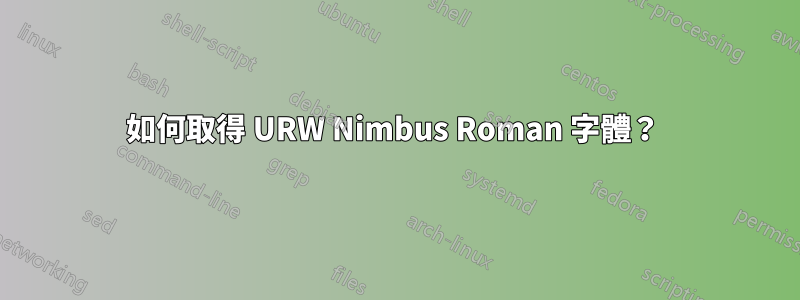
答案1
它看起來像 Liberation Serif,這個字體似乎是 Mac 上 LibreOffice 的預設選項,並且在外觀上與 Times New Roman 非常相似。
XeLaTeX 可以使用您的任何系統字體,因此如果您安裝了所需的字體,您只需將其包含在文件中,就像使用任何其他字體一樣。這甚至可以在每種語言的基礎上完成。例如,如果您希望在文件中為泰文文字使用 Angsana New 字體,您可以如下定義它:
\usepackage{polyglossia}
\setmainlanguage{english}
\setotherlanguage{thai}
\newfontfamily\thaifont[Script=Thai, Renderer=AAT]{Angsana New}
將軟體包與 XeTeX 或 LuaTeX 一起使用fontspec也應該允許您使用系統中安裝的任何 TTF 字型。請參閱此處以了解更多資訊:在 LaTeX 中安裝 TTF 字體
URW Nimbus Roman 字型似乎可以從這裡下載:https://www.fontsquirrel.com/fonts/nimbus-roman-no9-l
答案2
TeXLive 中包含 Nimbus 系列的字體(https://ctan.org/pkg/nimbus15)。將它們作為其他解決方案的附加元件載入可能更合適,請閱讀文件。
\documentclass[]{article}
\usepackage{iftex}
\iftutex
%% LuaLaTeX or XeLaTeX
\usepackage{fontspec}
\setmainfont{ztm}
\else
%% pdfLaTeX
\usepackage{nimbusserif}
\fi
\begin{document}
\section{Introduction}
In this article I address the question whether, and if so in what sense, logic
can be said to have normative authority over reasoning. I claim that there is an
interesting sense in which logic can indeed be said to be normative for
reasoning. To substantiate my claim, I proceed as follows. I begin by laying
out Gilbert Harman's influential skeptical challenge to the thesis that logic
and norms of reasoning are interestingly related. According to Harman, once we
realize that principles of deductive logic are not nrms of reasoning in and of
themselves, a gap opens up between the two. Thus, a response to Harman's
challenge would consist in what John MacFarlane (2004) has fittingly dubbed a
`bridge principle'---a general principle articulating a substantive and
systematic link between logic
\end{document}
使用 LuaLaTeX 的結果:




